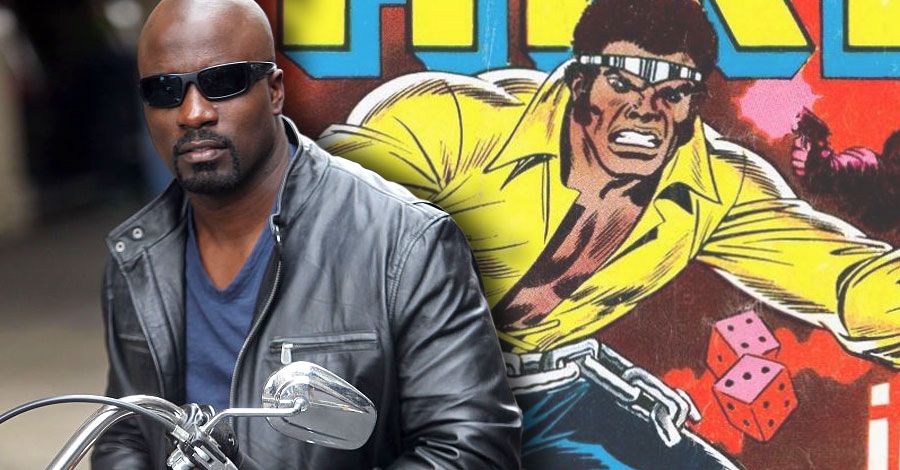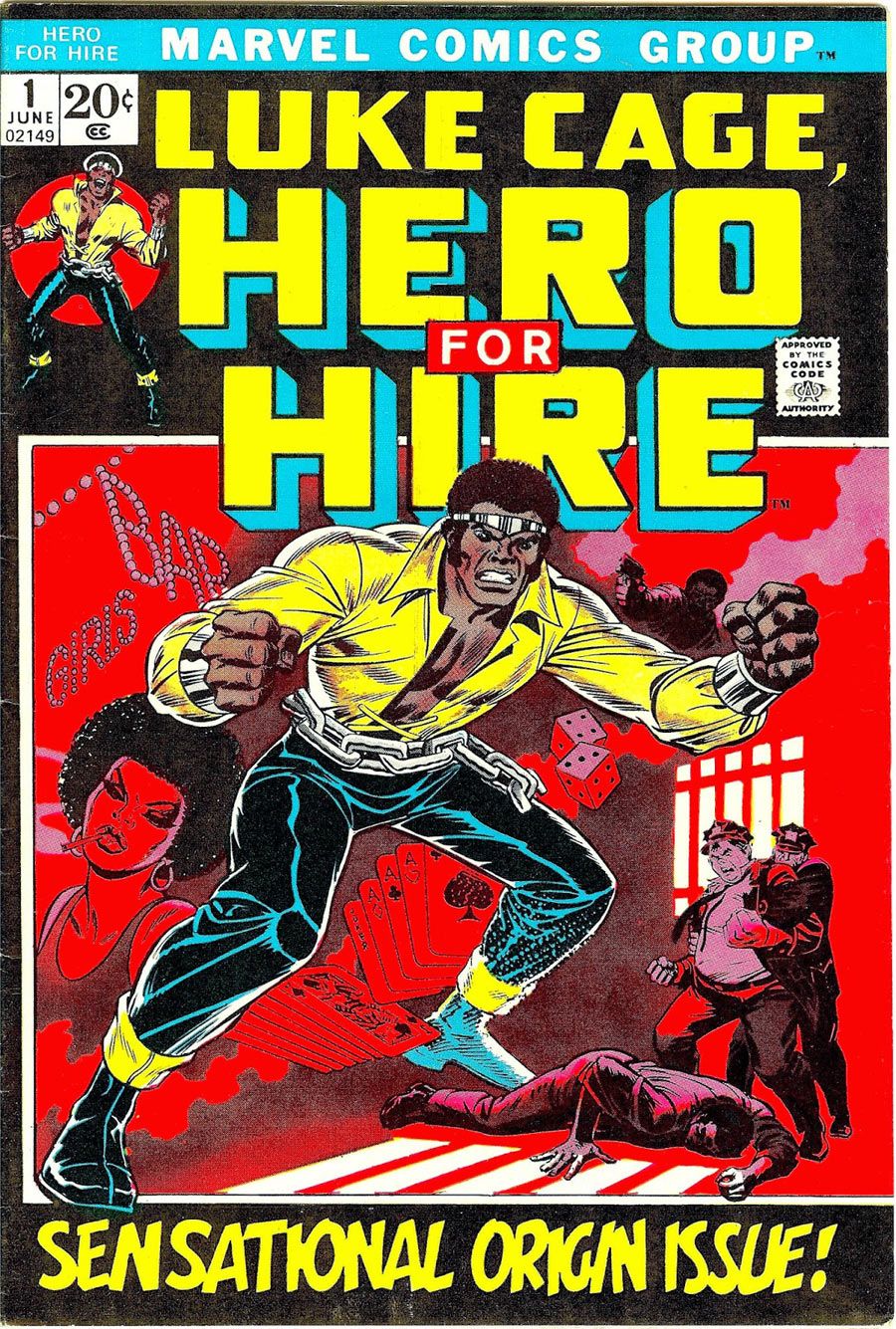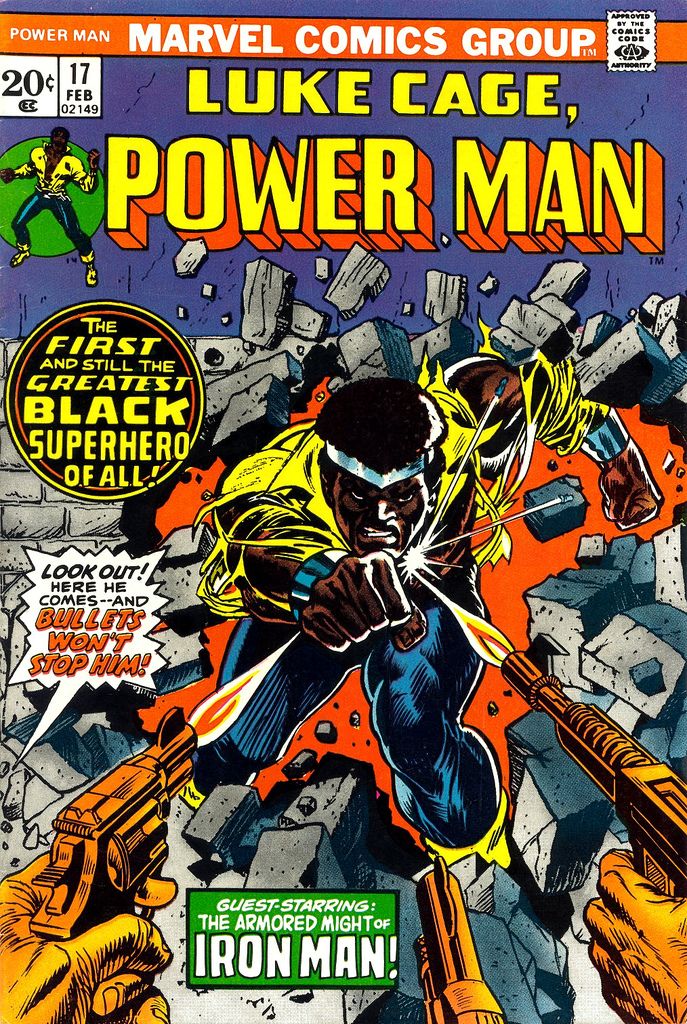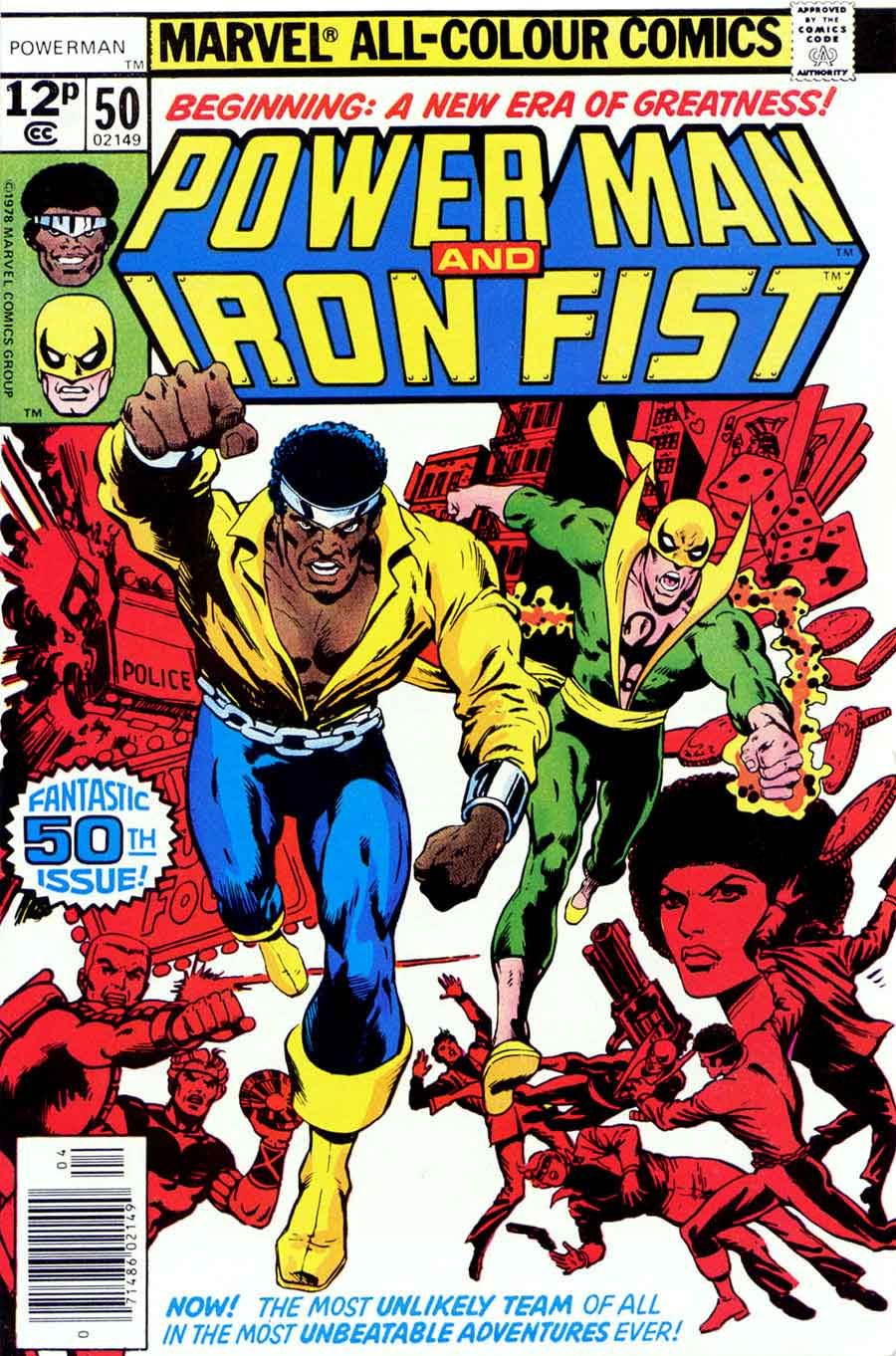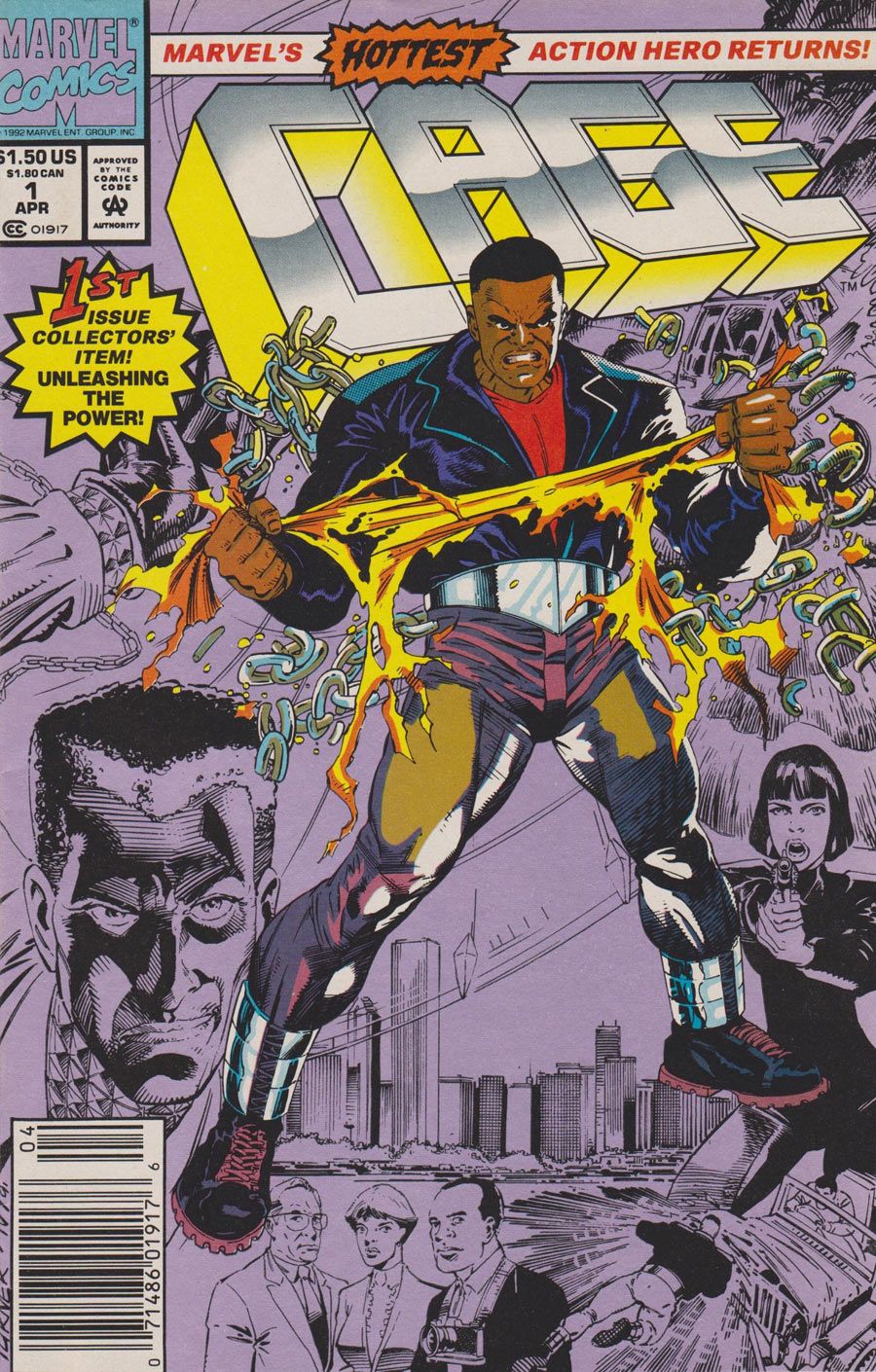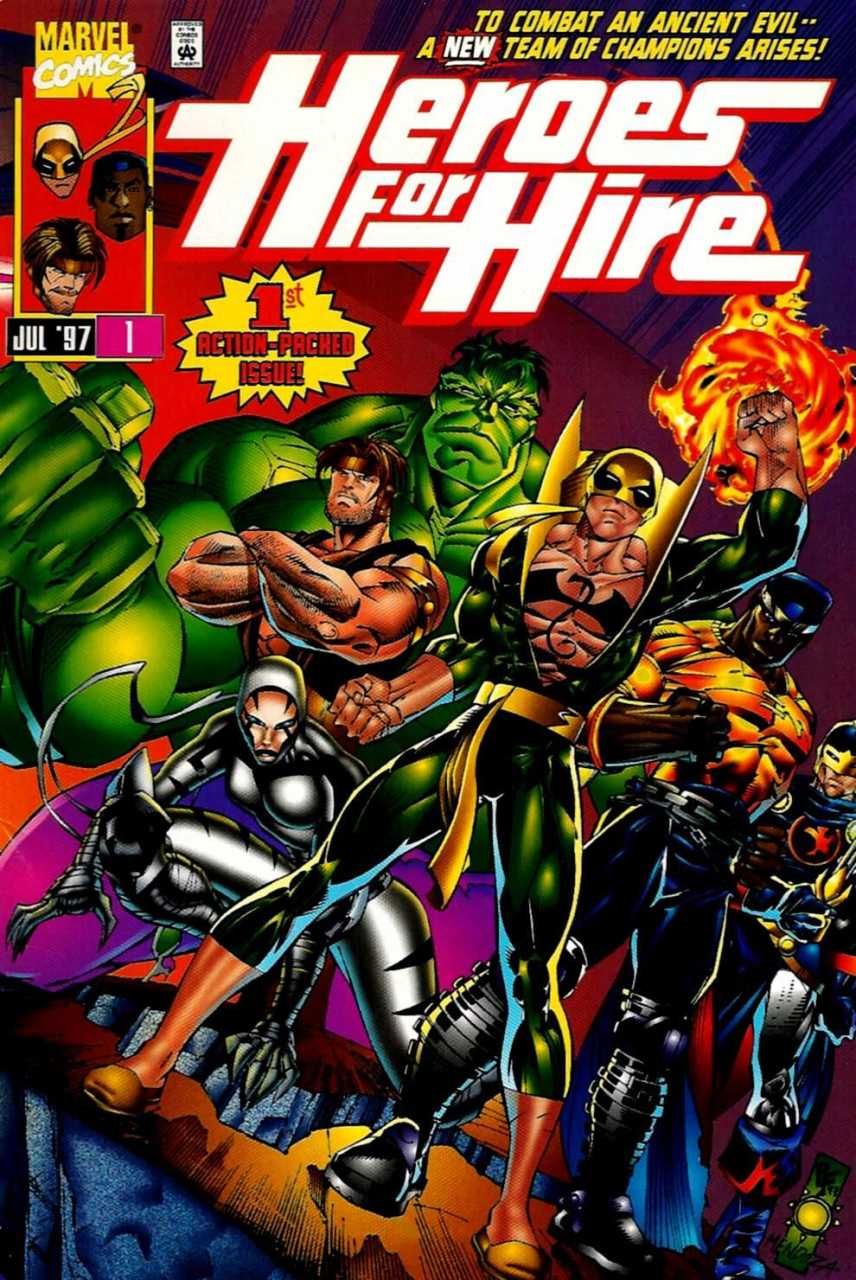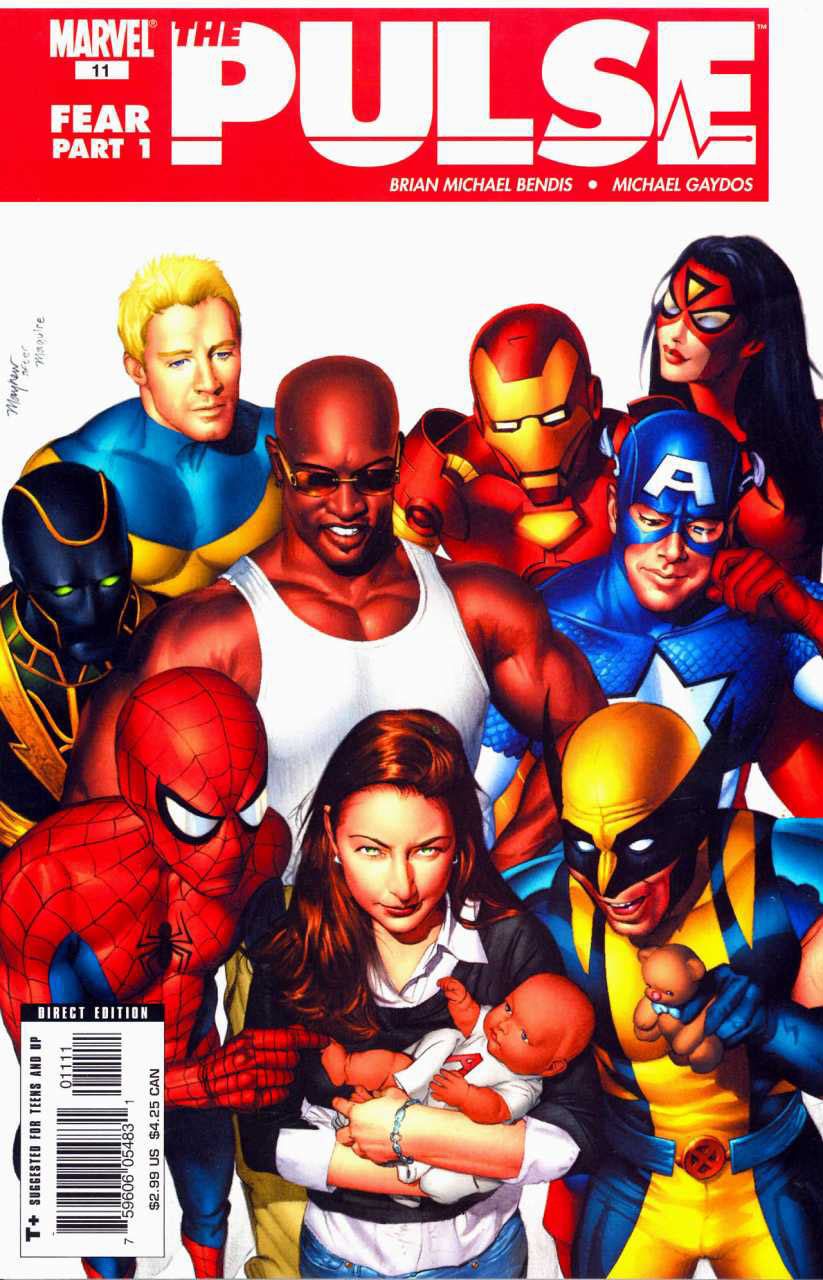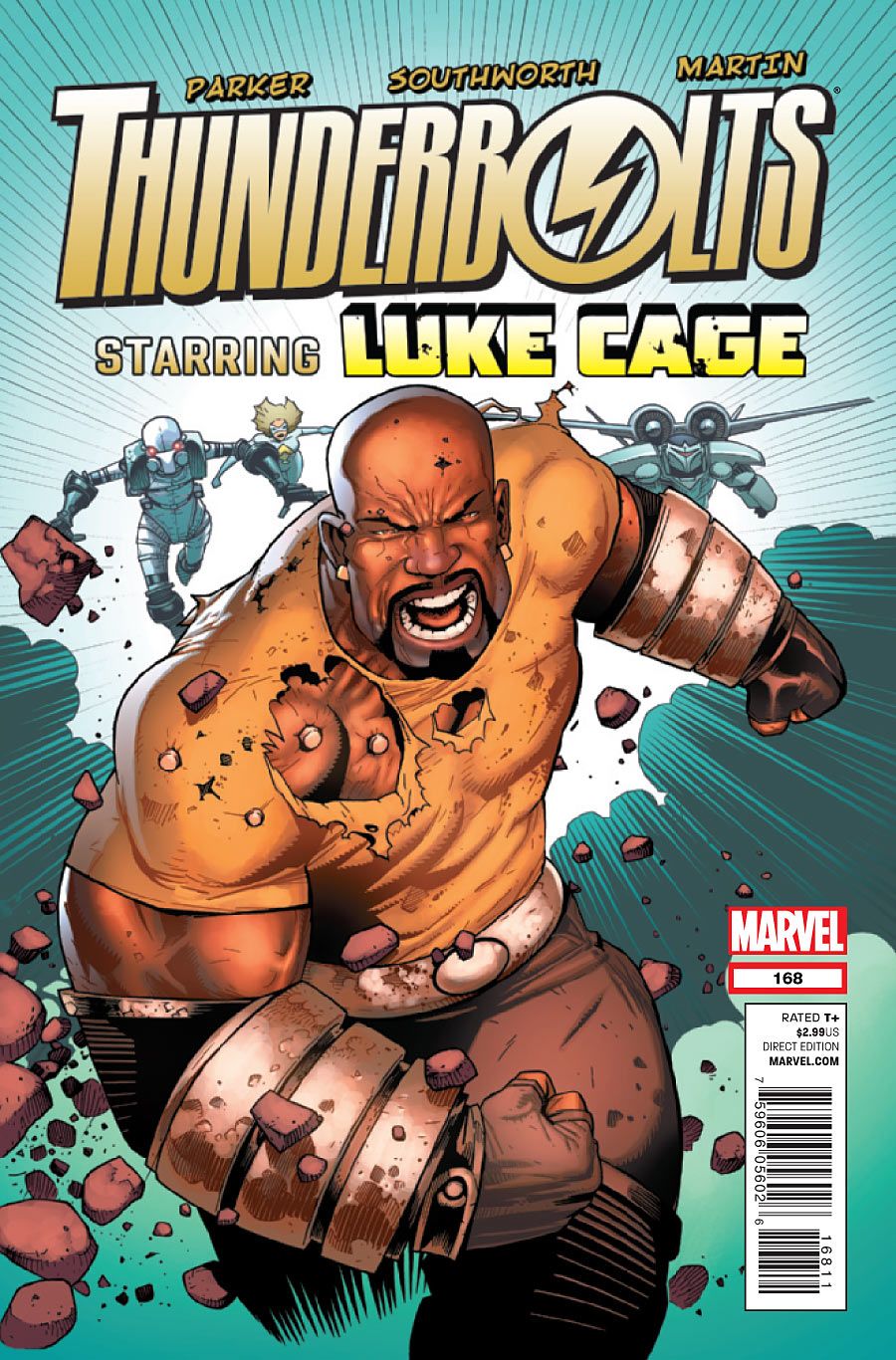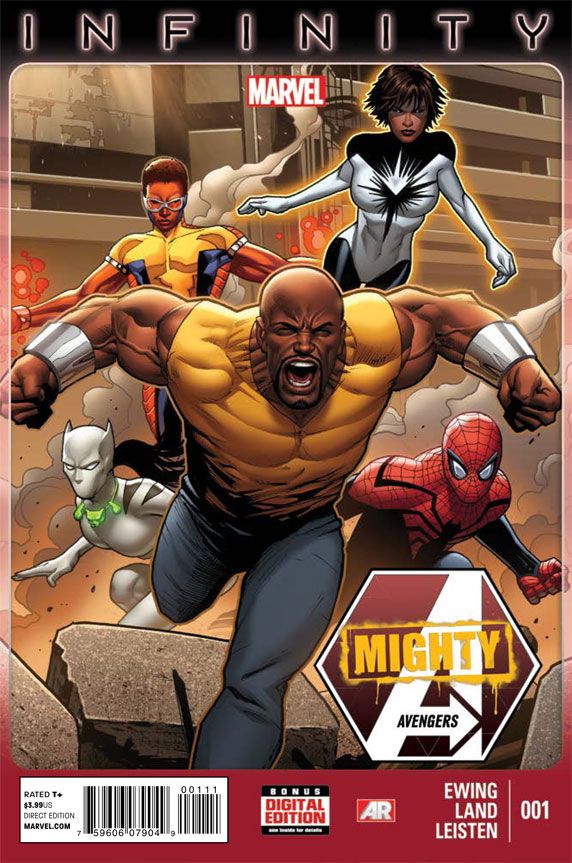With Mike Colter wowing fans and critics with his performance as Luke Cage on "Marvel's Jessica Jones," the world at large has finally discovered one of Marvel's greatest and most unique characters -- and will see even more of him on Netflix's follow-up "Luke Cage" show, currently in production.
Luke Cage has had many iterations since the character first debuted in June 1972 -- but how did Cage reach this level of prominence? Here's a look at the Luke's rich and diverse history, a 40-year journey from Hero to Hire to Netflix star.
Debut
With Blaxploitation cinema on the rise, Marvel responded with its take on the genre: Luke Cage, real name Carl Lucas, created by Archie Goodwin and John Romita Sr., and first seen in 1972's "Luke Cage, Hero for Hire" #1.
At the time, Black superheroes were a rarity in mainstream superhero comics. There was T'Challa, the Black Panther, who was introduced in the pages of the "Fantastic Four" a few years earlier, but other than a brief period where the King of Wakanda wore a mask that exposed his mouth, there was no immediate indication that the Black Panther was, in fact, Black. Luke Cage didn't wear a mask or a typical superhero costume of any sort, with his identity on full display.
In "Luke Cage, Hero for Hire" #1 fans witnessed Luke Cage imprisoned for heroin possession after his former gang mate and friend Willis Stryker plants the drug in Luke's apartment. Embittered by the betrayal, Cage tries to escape jail many times and is transferred to Seagate Prison, where he's abused by a racist prison guard named Albert "Billy Bob" Rackham. When Cage was arrested, he was trying to get out of gang life, but thanks to Stryker, Cage was now stuck in a federal prison under cruel conditions.
Despite being a street-level tale, Cage's story had its roots firmly in the Marvel Universe. While in the oppressive prison, Cage volunteered for an experiment based on the Super Soldier process. This being a Marvel comic, the experiment went wrong when Rackham, bitter after his abuse of Cage got him demoted, sabotaged the experiment. Cage was dosed with an organic chemical compound and was gifted with superhuman strength and unbreakable skin. Easily busting out of prison, Cage went back home where a chance encounter with crooks made him decide that he was going to use his new abilities to fight crime. But this new hero, marginalized and abused by society, was going to fight crime for profit.
The Hero for Hire concept was an ideal story engine for the character, who was drawn into adventures via whoever walked into his office. In order to give the series an urban noir sensibility, the creators set Luke's office in an old movie theatre, like the ones where audiences viewed the Blaxploitation epics of the day. He was given a strong supporting cast including Burstein, Dr. Claire Temple (Burstein's lab assistant and Cage's future love interest) and D.W. Griffith, a film student who owned the theater.
Power Man
Seeking to remarket Luke Cage and increase waning sales, Marvel changed the name of the title from "Luke Cage, Hero for Hire" to simply "Power Man" with issue #17. Cage faced many villains in the early days of the series, established Marvel baddies and new Blaxploitation-inspired menaces, but one battle stands out as the stuff of legend: Luke's battle with Marvel's greatest despot, the legendary Dr. Doom.
Cage's battle with Doom has become one of the most infamous stories of the Bronze Age. In it, Cage believes that Dr. Doom owes him money. So Cage travels to Latveria to confront the dictator in a hilarious and action-packed two-parter that is still talked about today. These two issues, "Luke Cage, Hero for Hire" #8 and #9, were written by Steve Englehart and drawn by George Tuska, and as insane as they were, the issues showed just how much potential Cage had as a part of the larger Marvel Universe. Moving forward, Cage would encounter many more Marvel mainstays and become part of the tapestry of the Marvel Universe.
Power Man and Iron Fist
As Luke Cage continued his solo run in his own comic, he began popping up in some unexpected places around the Marvel Universe. He was the first obstacle Spider-Man faced after the shocking deaths of Gwen Stacy and Norman Osborn ("Amazing Spider-Man" #123). Cage also temporarily replaced the Thing in the pages of the "Fantastic Four."
Many writers tried to find a consistent direction for Cage's solo title but sales continued to decline. In a final push to make Luke Cage work in a monthly comic, Marvel combined him with another struggling hero also created while chasing a fad. While Blaxploitation films were doing big box office, so were kung-fu films -- in response, Marvel created Iron Fist, whose origins were tied to Eastern mysticism. Iron Fist was a great character, but, like Cage, he struggled to find a niche in the tricky mid-'70s marketplace. Marvel combined both characters and the "Power Man and Iron Fist" series was born with issue #50 -- and neither character would be the same again. A character from the mean streets of New York City, combined with a martial arts fantasy character? There weren't two more unlikely allies in mainstream comics, and here they were, teaming up.
It seemed that no matter what type of story Power Man and Iron Fist were involved in, one would be the fish out of water. Iron Fist was a privileged white man who grew up in a mystic Asian city, and went on to fight with his friend and business partner in an urban setting; while Cage was a grounded, street-level character thrust into the mystic world that Iron Fist called home. The pair carried their own series until issue #125 (1986). Many talented creators followed Chris Claremont and John Byrne's three-issue run together (#48-#50) like Jo Duffy and a young Kurt Busiek, but it was Jim Owsley, the writer now known as Christopher Priest, that had the task of ending the series.
Owsley altered Luke Cage's speech patterns, dropping the "Sweet Christmas" in an effort to move past the character's Blaxploitation origins. Owsley wrote an unusual ending to the series with Cage (wrongly) hunted for the apparent death of Iron Fist, his friend and partner. The whole thing would later be retconned away, but fans of the pair were left with a tragic ending to a beloved series, and it would be a long time before Luke Cage would rise to prominence in the Marvel Universe again.
Cage
A fugitive once again thanks to being a suspect in Iron Fist's apparent death, Cage fled to Chicago where the character returned to his roots. On the cover of 1992's "Cage" #1, the former Power Man could be seen symbolically tearing up his famous yellow shirt. Now, Luke was clad in black leather to signify his new, no-nonsense sensibility.
"The Punisher" was one of Marvel's top sellers in this era, and the House of Ideas felt that the same dark and gritty aesthetic that defined Frank Castle would benefit sales on Luke Cage. "Cage" was a worthy experiment, with the former Power Man going up against some established Marvel villains and discovering that his pal Iron Fist was alive. The book got lost in the noise of the '90s, but it remains a compelling return to Cage's roots.
Heroes for Hire Returns
Cage and Iron Fist returned together in the pages of Roger Stern and John Ostrander's compelling, yet short-lived, "Heroes for Hire." The first issue, published in 1997, saw Cage re-team with Iron Fist and reform the Heroes for Hire, but this time, they were joined by heroes including Hulk, Hercules, Scott Lang's Ant-Man, She-Hulk (who had a brief romantic interlude with Cage), a new White Tiger and the Black Knight. The series reminded the Marvel faithful of Luke Cage's potential as part of a team and part of the mainstream Marvel Universe. The next time Cage would join a team, it would be Earth's Mightiest Heroes.
Cage, the Avengers and Brian Michael Bendis
Before Luke Cage joined the Avengers, he crossed paths with Jessica Jones, and the two characters have since become very closely linked. In the first issue of "Alias" (which inspired Netflix's "Jessica Jones" TV series), Jones, in a dark place, initiates a no-strings-attached sexual encounter with Luke Cage because she "just wants to feel something."
What began as a brief and torrid tryst ended up becoming one of the richest and sweetest romances in the Marvel Universe. "Alias" #1 was the first time writer Brian Michael Bendis utilized Luke Cage in one of his stories, but it was far from the last. When Bendis took over the Avengers, he brought Luke Cage with him. Cage wasn't a guest star, he was a core member of Earth's Mightiest Heroes for the first time in "New Avengers," rubbing shoulders with gods. The character emerged as the emotional core of the team.
Mainstream hero wasn't the only new role Luke would play, as in the last issue of "Alias," Jessica Jones revealed she was pregnant; she and Luke were later married. Before long, Jessica and newborn Danielle Cage joined her husband, and also became a part of the "Avengers" cast.
Thunderbolts
Thanks to his high-profile role in the Avengers, Marvel began to utilize Luke Cage across its publishing line. After "Siege," Luke took over as the leader of the government sanctioned supervillain task force, the Thunderbolts. Luke was no longer a loner; now, S.H.I.E.L.D. and the US government were looking to him to him as a leader. Luke was now more Captain America than urban vigilante, and an integral part of the heroic foundation of the Marvel Universe.
He may have clashed with many of the villains under his command, but as always, Luke demanded and received respect. Luke's time as head of the T-Bolts wasn't long, but it was an indication that his role had moved far beyond Harlem.
The Mighty Avengers
After Bendis left the "Avengers" books, Cage founded his own, notably diverse, group of Avengers, in the series "Mighty Avengers." The book debuted in 2013, and also starred heroes including Spectrum, Blue Marvel, White Tiger and a new Power Man, Victor Alvarez.
From a reaction to Blaxploitation to the co-star of one of the best loved buddy books in comic book history to leader of an Avengers team to a Netflix superstar, Luke Cage has come a long way. Thanks to his standout presence on "Marvel's Jessica Jones," the world has learned what a special character Luke Cage truly is -- and with a "Luke Cage" solo show in the works and a new "Power Man and Iron Fist" comic book series on the way, the character's profile looks to expand even further in the next year.

